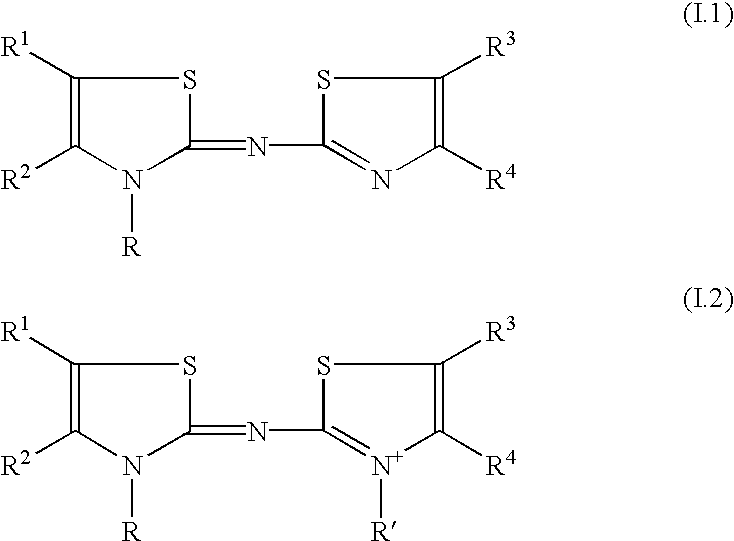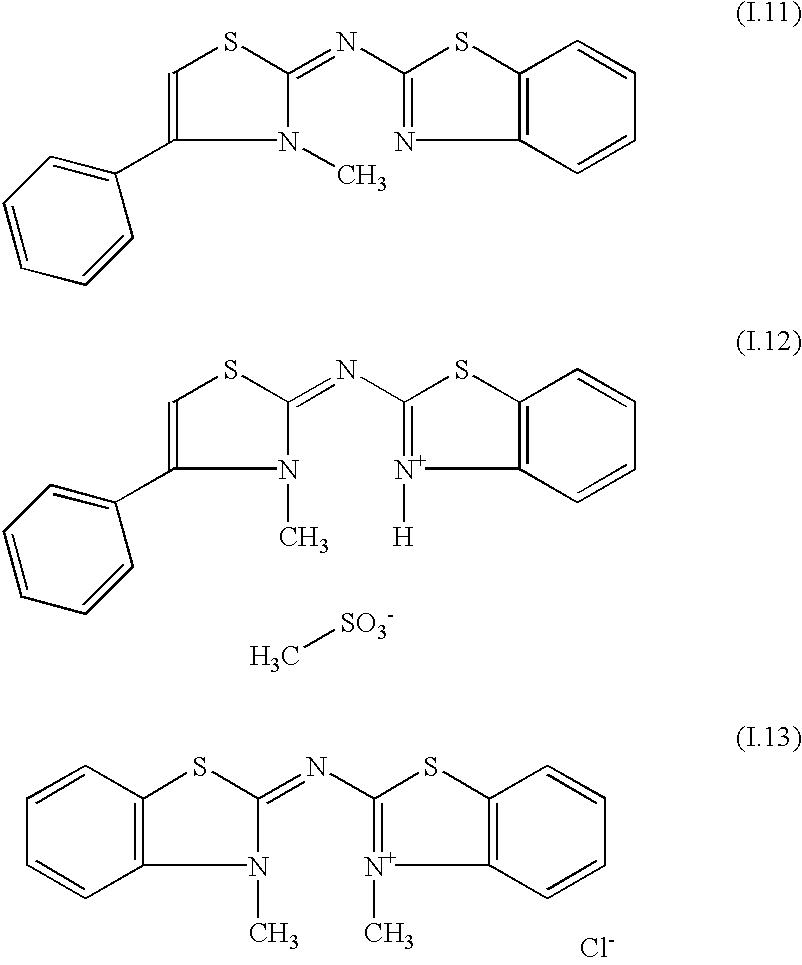Light-sensitive silver halide photographic film material and radiographic intensifying screen-film combination
a technology of radiographic intensification and film material, which is applied in the field of light-sensitive silver halide photographic film material and radiographic intensification screen film combination, can solve the problems of increasing the total specific grain surface, increasing the need for large amounts of suitable spectral sensitizers, and unsatisfactory, and achieves excellent image resolution, high ease of manipulation, and good elasticity of the screen
- Summary
- Abstract
- Description
- Claims
- Application Information
AI Technical Summary
Benefits of technology
Problems solved by technology
Method used
Image
Examples
example 1
Preparation of tabular emulsion A
To a solution of 6.9 g of an oxidized gelatin in 3 l of demineralized water at 51.degree. C., adjusted to a pH of 2.5 by adding H.sub.2 SO.sub.4, stirred up to a rate of 600 r.p.m., were added by a double jet method aqueous solutions of 0.98 M AgNO.sub.3 (hereinafter referred to as A1) and 0.98 M KBr (hereinafter referred to as B1): 25 ml of A1 and 25 ml of B1 were added in a time interval of 30 seconds. When the addition was completed, the temperature was increased up to 70.degree. C. over a period of 30 minutes: UAg was controlled (expressed in mV versus a Ag / AgCl(sat.) reference electrode and should be in the range from 44.5.+-.5 mV at a temperature of 70.degree. C..+-.1.degree. C. 1 minute later pH was set to a value of 5.0.+-.0.3 and immediately thereafter a solution of 50 g of inert gelatin in 500 ml of demineralized water of 70.degree. C. was added. 3 minutes later B1 was added at a rate of 7.06 ml / min. during 120 seconds, while simultaneously...
example 2
The same emulsion as in Example 1 was prepared again.
After washing, gelatin and water were added in order to obtain a silver halide content of 230.5 g / kg, expressed as AgNO.sub.3, and a gelatin content of 72.6 g / kg. The emulsion the pH of which was adjusted to 5.5, was divided into 4 equal parts, numbered Emulsion Nos. 11-14. To each part were added consecutively, per equivalent amount of 500 g of silver nitrate, 4 ml of a 1 wt. % KSCN solution, x ml (1 wt %) of the azacyanine dye corresponding with the same formula as in Example 1 dissolved in 18 ml of methanol, followed by addition, after 5 minutes of 2 ml of a 4.76.times.10.sup.-5 M solution of sodium toluenethiosulphonate in methanol, further followed by addition after 5 minutes of w' ml of a 0.25 wt. % solution of anhydro-5,5'-dichloro-3,3'-bis(n-propyl-3-sulphonate)-9-ethyl-benzoxa-carbocyanine triethylammonium salt, 5.5 mg of sodium thiosulphate dissolved in 10 ml of demineralized water at 35.degree. C., 7 ml of a 0.001 wt. %...
example 3
Preparation of Tabular Emulsion A'
To a solution of 7.5 g of an oxidized gelatin in 3 1 of demineralized water at 55.degree. C., adjusted to a pH of 2.0 by adding H.sub.2 SO.sub.4, stirred up to a rate of 600 r.p.m., were added by a double jet method aqueous solutions of 0.98 M AgNO.sub.3 (hereinafter referred to as A1) and 0.98 M KBr (hereinafter referred to as B1): 30 ml of A1 and 30 ml of B1 were added in a time interval of 30 seconds. The temperature was increased up to 70.degree. C. over a period of 32 minutes: UAg was controlled and should be in the range from 44.5.+-.5 mV (measured versus a Ag / AgCl(sat.) reference electrode. pH was set to a value of 5.0.+-.0.3 and immediately thereafter a solution of 50 g of inert gelatin in 500 ml of demineralized water of 70.degree. C. was added.
3 minutes later B1 was added at a rate of 7 ml / min. during 120 seconds, while simultaneously adding by double jet A1 at a rate of 7.23 ml / min. In a further double jet addition A1 and B1 were added du...
PUM
| Property | Measurement | Unit |
|---|---|---|
| thickness | aaaaa | aaaaa |
| average crystal diameter | aaaaa | aaaaa |
| average crystal diameter | aaaaa | aaaaa |
Abstract
Description
Claims
Application Information
 Login to View More
Login to View More - R&D
- Intellectual Property
- Life Sciences
- Materials
- Tech Scout
- Unparalleled Data Quality
- Higher Quality Content
- 60% Fewer Hallucinations
Browse by: Latest US Patents, China's latest patents, Technical Efficacy Thesaurus, Application Domain, Technology Topic, Popular Technical Reports.
© 2025 PatSnap. All rights reserved.Legal|Privacy policy|Modern Slavery Act Transparency Statement|Sitemap|About US| Contact US: help@patsnap.com



